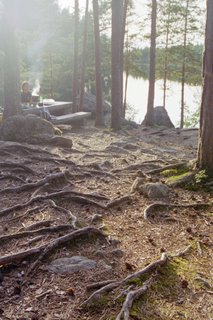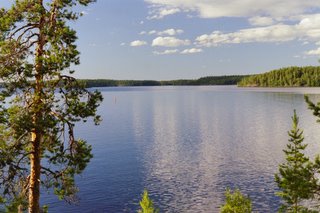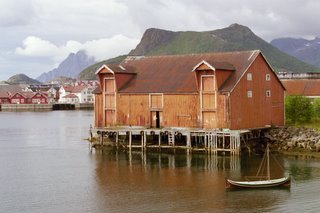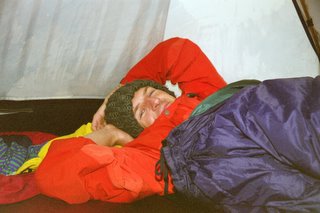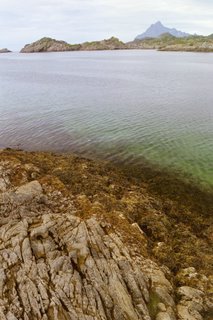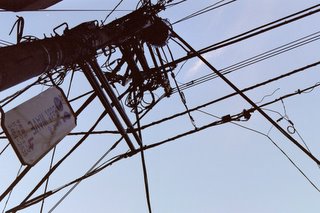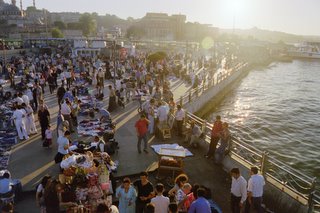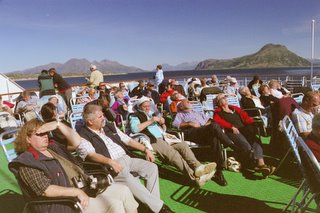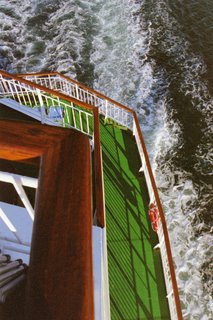Sourdough? Mmmmm delicious
Below I have posted a copy of a guide that I pulled together for some of my interested classmates (sorry if the table is grainy, I did my best) - some of whom now make far better bread than me! A second document is planned, which incorporates some new info and fills gaps in the doc below: thanks to Mum for sending over my book (see http://www.sourdo.com/). I don't follow that book's instructions exactly, as it is a longer process that what I have outlined below, but his recipes are great - especially swedish limpa bread!
Thanks also to this guy called Les Bartlett, from Crystal Waters Ecolvillage in Queensland. My brief experience of baking organic, wood-fired, sourdough bread with him for just one day sticks in my mind as one of the most beautiful, creative processes I have ever witnessed. See http://www.newfarm.org/international/features/0604/australia/index.shtml and scroll down.
One more website is http://www.sourdough.com.au/ - check out the links, especially to ‘Sourdough and Artisan Baking websites’.
Sourdough bread baking advice
Here is some basic information on baking sourdough bread. I am a bit rusty on the history and why you do certain things, but am getting pretty good on the ‘how’. Below I have outlined step by step how I actually bake a basic loaf of bread, with comments side about options and reasons for doing things in this way. At the end is the advice I followed to (eventually) get my starter going.
Equipment and ingredients:
I use plastic / wooden / glass / terracotta utensils and containers. Apparently some metals ones are reactive and can ruin your starter. I bake on a metal oven tray, or in a terracotta container.
Warm water (30-40 celsius). To start with I used purified/distilled/boiled water to make sure my starter got going. Now, Karlskrona tap water seems fine.
Flour. I have used:
- rye (‘råg’ – heavier, soaks up a lot more water therefore smaller loaf),
- spelt (‘dinkel’ – smooth texture, more digestible because of different type of gluten?),
- white wheat (vete – bleached, unbleached, ‘special’),
- wholemeal (fullkorn).
All seem to work fine. One thing I tend to do is add a little bit of rye to everything e.g. my starter, every type of bread I bake. This is my preference, and also based on the fact that rye and wholemeal flours accelerate fermentation.
Sugar. I use unrefined brown sugar, but you need not use it at all.
Salt. You need to use this.
Olive Oil. You can use softened butter or margarine, or none at all.
Cleaning up. It you leave glue covered containers, they will eventually dry out and make it easy to clean. I keep my hands clean by keeping everything moist, rather than covering everything in flour.
 Here is an excerpt from one of the websites I used to get me started here in Sweden:
Here is an excerpt from one of the websites I used to get me started here in Sweden:
The novel thing about sourdough baking is that it requires that you keep something alive in your fridge. I think of my starter as a pet, kept and fed so that Sandra and I will have all the bread we need. Sourdough "starter" is a batter of flour and water, filled with living yeast and bacteria. The yeast and bacteria form a stable symbiotic relationship, and (as long as you keep the starter fed) can live for centuries, a thriving colony of microorganisms. To make sourdough bread, you blend the starter with some flour and make dough. The yeast propogates, and leavens your bread. This is how you make your starter:
Select a container that your "pet" will live in. A wide-mouthed glass jar is best. I use a glass jar with a rubber and wireframe seal; you can find these for $2-$4 in any antique or junk shop. A small crock with a loose lid is also great; these can be bought in cheap sets for serving soup. You can also use a rubbermaid or tupperware container. I've begun starters using the plastic containers that take-out Chinese soup comes in, and then transferred them to jars later! A wide-mouthed mayonnaise or pickle jar will also do just fine. Metallic containers are a bad idea; some of them are reactive and can ruin your starter (for the same reason, avoid using metal utensils to stir your starter).
Blend a cup of warm water and a cup of flour, and pour it into the jar. That's the whole recipe! I use plain, unbleached bread flour most of the time, but I've had good results with all-purpose and whole-wheat flour, too. If you want, you can add a little commercial yeast to a starter to "boost" it. If you do this, sourdough snobs will look down their nose at you - but who cares about snobs? I personally find that (at least here where I live) no yeast "boost" is necessary, and I can make "real" sourdough with no trouble. But if you are having trouble, go ahead and cheat. I won't tell. Note that starter made with commercial yeast often produces a bread with less distinctive sour flavor than the real thing.
Every 24 Hours, Feed the Starter. You should keep the starter in a warm place; 70-80 degrees Farenheit is perfect. This allows the yeast already present in the flour (and in the air) to grow rapidly. Temperatures hotter than 100 degrees or so will kill it. You can take comfort from the fact that almost nothing else will do so. The way you feed the starter is to (A) throw away half of it and then (B) add a half-cup of flour and a half-cup of water. Do this every 24 hours. Within three or four days (it can take longer, a week or more, and it can happen more quickly) you should start getting lots of bubbles throughought, and a pleasant sour or beery smell. The starter may start to puff up, too. This is good. Here's the gist: When your starter develops a bubbly froth, it is done. You have succeeded. If this sounds brain-dead simple, that's because it is. People who didn't believe the Earth was round did this for millenia.
Refrigerate the Starter. Keep the starter in your fridge, with a lid on it. Allow a little breathing space in the lid. If you're using a mayo or pickle jar, punch a hole in the lit with a nail, that kind of thing. Once the starter is chilled, it needs to be fed only once a week. Realistically, you can get away with less; it's important to remember that your starter is a colony of life-forms that are almost impossible to kill (except with extreme heat). Even starving them is difficult.


